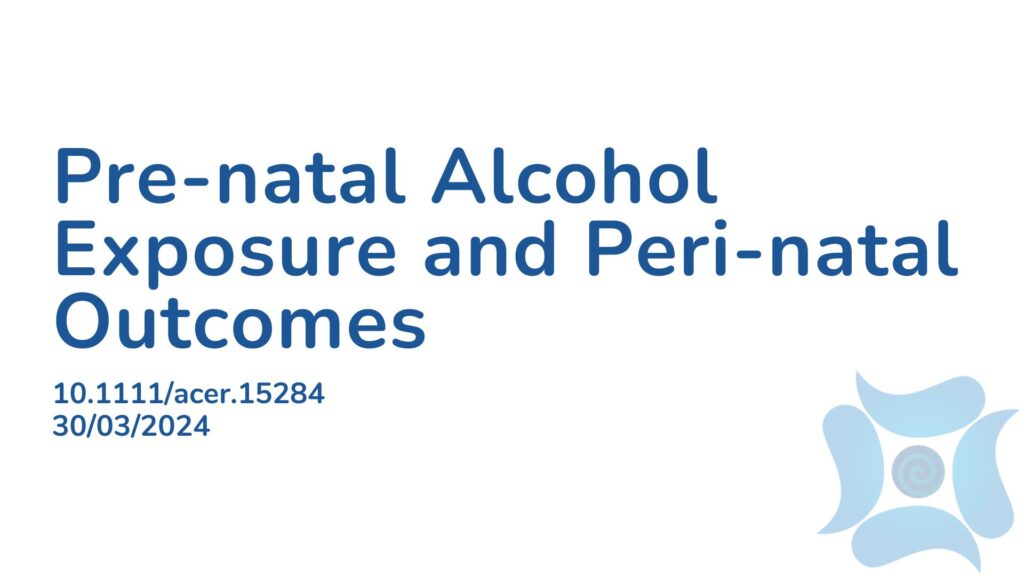Summary:
This study aimed to explore the impact of mild to moderate pre-natal alcohol exposure (PAE), as well as episodic binge drinking on peri-natal outcomes, which is the period of time from becoming pregnant to one year post birth. Data from three cohorts involving 281 participants (125 with PAE and 156 without), were analyzed. Alcohol consumption levels were assessed using various measures, and peri-natal outcomes, including gestational age (duration of pregnancy), were examined. Results indicated significant associations between alcohol measures and poor gestational age at delivery, even after adjusting for confounding factors. Additionally, episodic binge drinking was also negatively linked to length of birth, and low birth weight of the offspring. These findings underscore the adverse effects of PAE, emphasizing the importance of preventive measures targeting alcohol consumption in individuals of reproductive age.
Abstract:
Background: A better understanding of the effects of lower levels of prenatal alcohol exposure (PAE), as a common exposure, is needed. The goal of this study was to examine the effects of mild–moderate PAE and episodic binge drinking on perinatal outcomes. Methods: The data were obtained from three prospective cohorts with a combined sample of 281 participants: 125 with PAE and 156 without PAE. Alcohol-related measures included the Alcohol Use Disorders Identification Test, timeline follow-back questionnaires (covering the periconceptional period, mid-gestation, and late gestation), and biomarkers. Absolute alcohol per day (AAD) and per drinking day (AADD), number of binge episodes, and maximum number of drinks in a 24-h period were estimated. Perinatal outcomes included gestational age and anthropometric measures. Data were analyzed using correlation and multivariable regression analysis. Results: Among women with PAE, average alcohol consumption across the periconceptional period and pregnancy was 0.37 oz ± 0.74 AA/day (~5 drinks/week). After adjusting for tobacco co-exposure and sociodemographic characteristics, significant associations between all alcohol measures and gestational age at delivery were observed, including cumulative measures of AAD (β = −0.58; 95% CI: −0.98; −0.17) and AADD (β = −0.58; 95% CI: −0.90; −0.26) during pregnancy and the periconceptional period. A significant association between the maximum number of drinks in a 24-h period and birth length percentile (β = −0.70; 95% CI: −1.36; −0.04) was observed in the final model. PAE was associated with lower birth weight percentile in univariate analyses only. Conclusions: Results of this study demonstrate a negative association between mild–moderate PAE and episodic binge drinking with gestational age at delivery and birth length percentile after controlling for other factors. Robust negative effects of PAE, including in the periconceptional period before pregnancy recognition, on duration of gestation highlight the need for primary prevention efforts aimed at PAE in persons of reproductive age.
Article Publication Date: 30/03/2024
DOI: 10.1111/acer.15284




